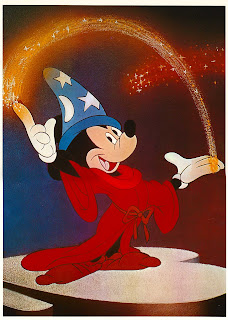Display and guerilla advertising
Guerilla advertising uses the space around it, and enhances its aspects or structure to make use for its product, service or campaign in a visually striking way. It seems out of place and very noticeable to not only its target audience but also to people in the area in which it is situated; allowing it to grab the attention of many more people than for example, a poster on a wall, as it obstructs their everyday life or environment. Guerilla advertising is often extremely memorable and therefore very effective, especially for products as these items are usually larger than life and the brand name is large enough to be seen and recognised from a distance in a busy place.
Tide Detergent:
Agency: Leo Burnett, Frankfurt
Leo Burnett: "To demonstrate the long lasting whiteness of Tide detergent, we created an outdoor poster in a really busy road, with constant heavy traffic. The poster was covered in cotton with self cleaning effect which over the course of a few weeks became more and more polluted, finally revealing a clothes line of brilliant white clothes."
The visual message of this is that even though the imaginary clothes have been subjected to high pollution levels; evident by the amount of dust and dirt surrounding it, they have remained white, conveying their message of 'longer lasting whites'.
Being positioned on a main road allows this advert to be seen by many people, both in cars and walking past, many of which may be the audience of home owners. The logo and tag line 'longer lasting whites' are quite small up in the top right hand corner, which encourages the audience to interact and search for the reason to this imagery.
As the advert takes a while to come to life, those who pass the spot regularly will watch it materialise over a period of time and notice the change, making a larger impact on the local homeowners in the residential area. Therefore, there people are then more likely to see the logo often, and be more persuaded to buy the product.
As cars will be going past as a fairly high speed, being a main road, the advert has to be large and long enough so that it is in view for an amount of time in which they notice it. Then, if they drive past again, they will be likely to look for the brand and will remember it.
Hewlett Packard:
Agency: Publicis, Malaysia
"HP Advanced Photo Paper guarantees true-to-life image quality. To highlight this benefit, a standee was customised to give the impression that someone actually walked through a gigantic piece of paper and caused it to tear. Several of these standees were then placed at strategic locations to demonstrate to passers- by that what's real to their eyes is actually a reproduction using HP advanced Photo Paper."
Again, this advert is interactive in the sense that the audience feel compelled to get closer to inspect it. Then, they find out it is really an installation piece made to form an illusion. As they get closer, they see the logo and information on the ripped piece of paper. They are impressed by the clever advertising which causes them to remember the incident, as well as the brand and message of realistic quality associated with Hewlett Packard. In creating this advert, the designer had to take into account the perspective of the audience; so as to position it in a way where they will see it front on to enable the illusion to work. Also, to make it look real, they had to make the installation the real size of a human and place it somewhere busy in order to attract as many passers- by as possible. The size of the information causes the audience to interact as they need to get closer and then read it.
Accessorize:
Agency: Saatichi and Saatchi, Switzerland
The oversized beads threaded in-between bollards almost blend in to the environment as they are made to look like the chains which would usually occupy this space, but the bright colours are eye catching and strange which encourages passers-by to investigate. They then realise they are necklaces and find the giant price tag, along with the Accessorize logo. The audience for this advert is women, who are attracted by the colours and abnormal addition to the environment. As soon as they realise it resembles jewellery, they are already being persuaded to buy that product and others like it. This ad was placed in an open area, perhaps in a town centre, near shops and perhaps near to the Accessorize outlet.














